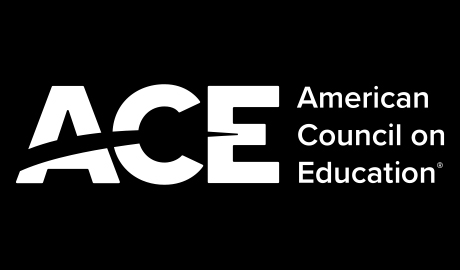Business Courses by Outlier by Savvas
Transform your high school business classroom into a college lecture hall

Captivating Courses Students Love
Cinematic lectures from experts in the field, combined with interactive learning, create the kind of college courses that students actually enjoy and succeed in.
Seamless Educator Experience
Educators get everything they want—simple setup, engaging lessons, real-time visibility into student progress—without the extra grading or required credentials.

College Credit Students Can Take Anywhere
Recommended by the American Council on Education*, each course earns students real college credits. We’ve sent transcripts to 800+ institutions nationwide—and counting!
Essential business concepts and techniques needed for college credit (and then some!)
-
Intro to Business
-
Intro to Financial Accounting
-
Professional Communication
Key Concepts Covered
-
Business, Marketing, and Finances
- Supply and demand
- The profit function
- Economic systems and market structures
- Marketing segmentation, targeting, and positioning
- The 4 Ps of marketing
- The marketing funnel
- Financing a business
- Growing your money
-
Management and Accounting
- The role of management
- Organizational structures
- Motivation, rewards, and incentives
- Control and evaluation
- The accounting equation
- Debits, credits, and double-entry bookkeeping
- Financial statements
- Ratio analysis
-
Operations and Logistics
- How operations and logistics work
- Production
- Localization
- Facility design
- Resource planning
- Routing and scheduling
- Quality management
-
Information Technology, Ethics, and Macroeconomics
- Types of information systems
- Knowledge management
- Data security and privacy
- Automation, AI, and machine learning
- Ethics
- Shareholders and stakeholders
- Monetary and fiscal policy
-
Personal Planning and Entrepreneurship
- Resume development and career planning
- Personal finance
- Business ownership
- Entrepreneurship
- Contemporary issues in business
Key Concepts Covered
-
Introduction to Accounting and Financial Statements
- Importance and users of accounting
- Accounting activities and career paths
- Financial statements and their relationships
- Analyzing and recording transactions
- Journal entries
-
Adjustments and Completion of the Accounting Cycle
- Adjusting entries and the adjustment process
- Recording and posting common types of adjusting entries
- Ledger balances and preparing an adjusted trial balance
- Preparing financial statements using the adjusted trial balance
- Closing entries and post-closing trial balance
- The current ratio and working capital balance
- The comprehensive accounting cycle
-
Merchandising Transactions, Fraud, and Internal Controls
- Merchandising vs. service activities and transactions
- Perpetual vs. periodic inventory systems
- Freight-in methods
- Accounting fraud, internal controls, and management responsibilities
- Bank reconciliation and associated journal entries
- Financial statement fraud and SOX requirements
-
Accounting for Receivables and Inventory
- Revenue Recognition Principle
- Uncollectable accounts
- Receivables management using financial ratios
- Notes receivable and accounts receivable
- Cost of goods sold and ending
- Inventory: Periodic Method
- Inventory valuation errors
-
Long-Term Assets and Liabilities
- Tangible and intangible assets
- Capitalized costs versus expenses
- Depreciation methods
- Intangible assets and recording related transactions
- Analyzing, journalizing, and reporting current liabilities
- Contingent liabilities
- Journal entries for short-term notes payable
- Pricing and amortization of long-term liabilities (straight line method)
- Statement of cash flows: purpose, preparation (indirect method), assessing liquidity and solvency
Key Concepts Covered
-
Communication and Storytelling
- Why communication matters
- How to tell a story
- Principles of communication
- Story structure and function
- Attention, memory, and recall in storytelling
-
The Job Search
- Public speaking in the real world
- Kicking off the job search
- Interview preparation, format, and etiquette
- Cultivating professionalism in writing
- Resumes and cover letters
- Identifying and overcoming anxieties
- Confident cross-cultural communication
- Communicating confidence in body language
- Coping with the unexpected
-
Presentations
- Choosing a topic
- Research and citation
- Organization and structure
- Presentation delivery
- Transitions
- Presentation aids
- Slide design and formats
- Informative vs. persuasive presentations
- Audience analysis
-
Interpersonal Communication
- Understanding your personal communication style
- Identity and intersectionality
- Building cultural awareness
- Interpersonal communication
- Communication in the workplace
- Active listening and barriers to listening
- Recognizing and improving nonverbal communication
- Movement, gestures, and voice as a public speaker
- Nonverbal communication at work
-
Group Communication
- Group roles and dynamics
- Teamwork, problem-solving, and decision-making
- Persuasion 101
- Types of persuasive speeches
- Structuring a persuasive presentation
- Making and supporting arguments
- Giving and receiving feedback
School Stories
“I was blown away with how successful our kids were with Outlier.” Jack Wallace, Principal of St. Augustine Prep High School
Read Case StudyBusiness Courses Frequently Asked Questions
-
Are business courses completely online?Yes, Outlier business courses are 100% online and asynchronous. Your students can learn with any teacher, during any class period—anywhere in the universe with Wi-Fi and a laptop or desktop computer.
-
What support is available for students and/or teachers?
Your students have access to robust support and unlimited tutoring in all math and writing courses (this includes Intro to Financial Accounting). Your teachers get complete visibility into student progress in our Partner Dashboard, including:
- Progress monitoring based on the course syllabus and schedule
- Grade pacing and forecasting based on students’ performance
-
What is the minimum/maximum enrollment?Outlier business courses have unlimited enrollment. So you can mix and match courses to suit your school’s unique needs.
-
What technology does my school need to take Outlier courses?Each student must have access to technology that meets the technical requirements noted in this Help Center article.
-
Are there any student eligibility requirements?Students must be at least 13 years old. Students who enroll in an Outlier course should be ready for the academic rigor of college-level coursework and carefully consider their existing responsibilities and dedication.
-
What is the time commitment for Outlier business courses?
Outlier courses are as academically rigorous as they are engaging. Students can expect to spend about 45 minutes a day (about 5 hours per week), including time at school and at home. We recommend students:
- Have at least one class period in their school schedule dedicated to their Outlier course
- Take only 1 Outlier course at a time
-
Are there any course prerequisites?Outlier business courses are introductory level. So they do not require any prerequisites for enrollment.
-
How are Outlier courses structured?Outlier courses are divided into a series of chapters and sections. Each section contains cinematic video lectures and active learning (interactive digital textbook) that help students learn the course content. Some courses also include sample problems or flashcard sets that reinforce their understanding of course concepts and prepare them for exams. Students demonstrate their knowledge on graded assessments like weekly writing assignments, quizzes, midterm exams, and final exams.
Prepare your students for college and career success. All with one solution.
Whether you want to empower your students to explore potential careers, prepare for college, or become certified professionals, it’s easy to do it all with Savvas PathMaker. Simply mix and match dual enrollment courses and CTE courses from our comprehensive catalog to create personalized pathways for every student.
Mix and match to build your perfect career pathways:
| Example Pathway | What students learn | What students earn |
|---|---|---|
| IT Associate | Networking† Cybersecurity 1† Professional Communication * |
Cisco Certified Network Associate 3 college credits |
| Aerospace Technology | Aeronautics and Space Travel † Drones: Remote Pilot † Intro to Astronomy * |
FAA Part 107 Commercial Drone Pilot 3 college credits |
| Digital Marketing | Meta® Social Media * Adobe InDesign® † Professional Communication * |
Meta® Certified Digital Marketing Associate Adobe® Certified Professional in Print & Digital Media Publication using Adobe InDesign® 3 college credits |
* Outlier by Savvas Dual Enrollment
*American Council on Education or ACE evaluates formal education courses and programs for college credit. For more information, visit ACE Learning Evaluations online at www.acenet.edu/evaluations.